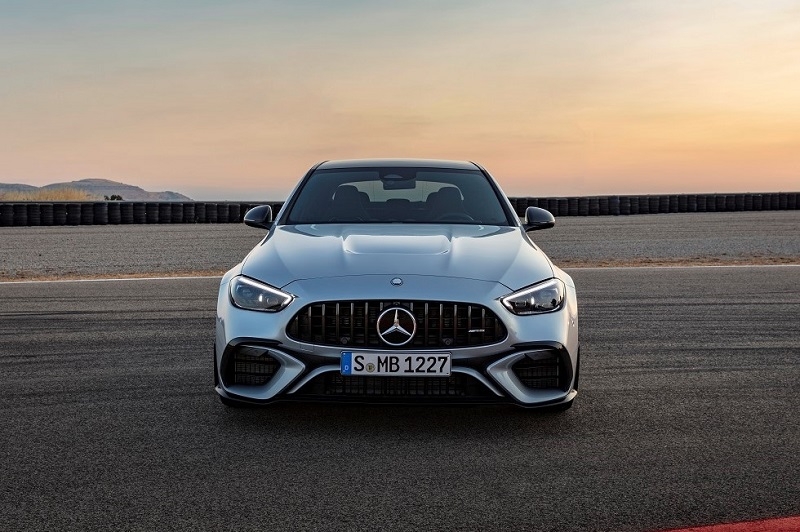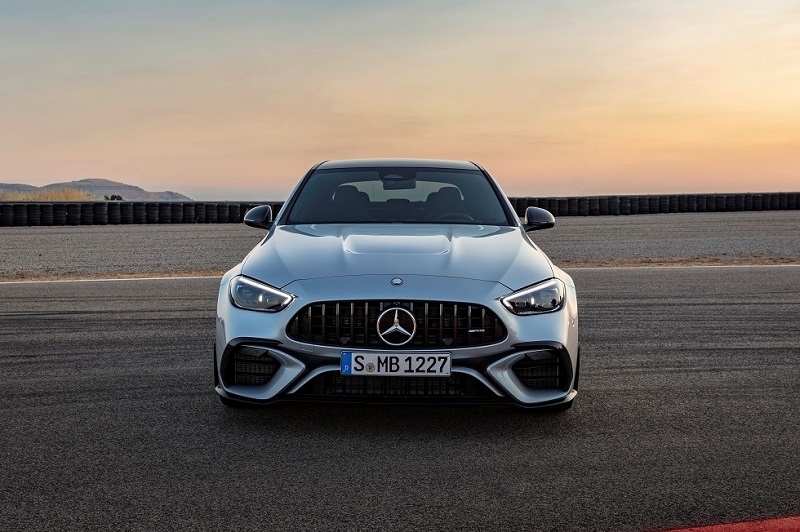Half the engine, half the fun?
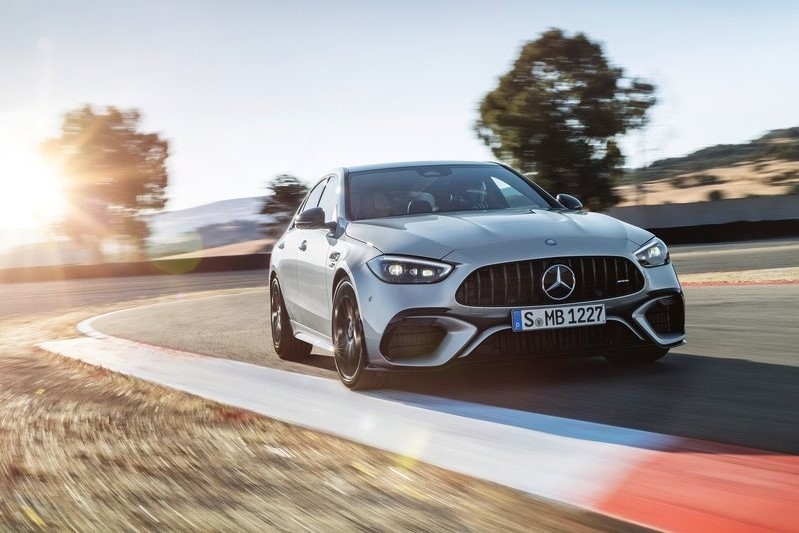
AMG has been open for the last couple years about the new C63 ditching the glorious V8 and switching to a plug-in hybrid setup with even greater performance, but until now we’ve not known exactly how it would hit those targets. As a petrolhead, the headline is pretty bleak. But from a tech point of view, it makes for some genuinely fascinating reading.
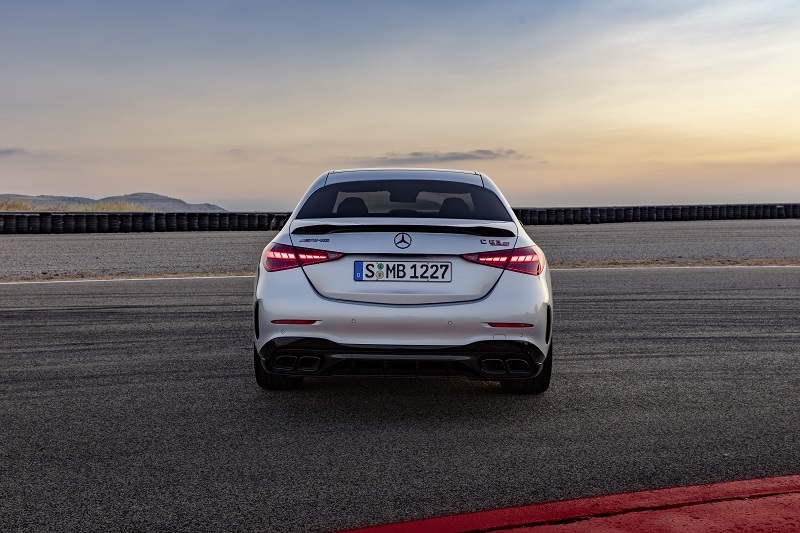
First, the good stuff: This W206 C63 S is the most powerful C-Class ever, with peak outputs of 680hp and 1020Nm; 0-100km/h is blitzed in 3.4 seconds; top speed is the usual 250km/h as standard or 280km/h with the optional AMG Driver’s Package. Oh, and it’s available as a wagon too.
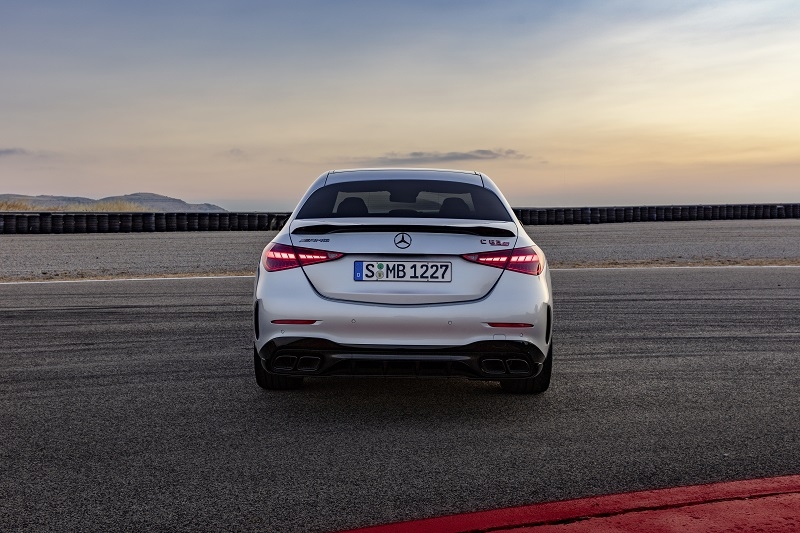
First, the good stuff: This W206 C63 S is the most powerful C-Class ever, with peak outputs of 680hp and 1020Nm; 0-100km/h is blitzed in 3.4 seconds; top speed is the usual 250km/h as standard or 280km/h with the optional AMG Driver’s Package. Oh, and it’s available as a wagon too.
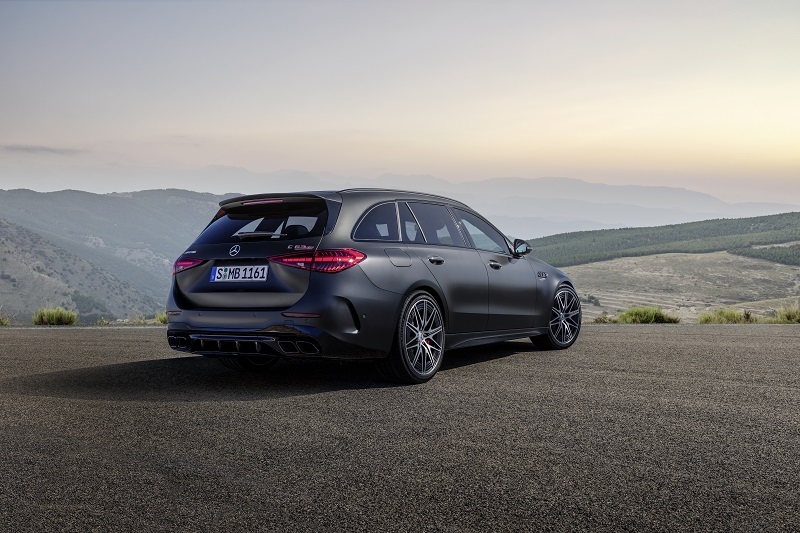
The engine is the M139 2.0-litre four-pot from the A45 S and CLA45 S, except installed longitudinally instead of transversely to power the rear wheels (via AMG’s 9-speed multi-clutch auto gearbox). The M139 was already the most powerful production four-cyl in the world, but in the C63 S it’s been whacked up to a faintly ridiculous 476hp and 545Nm (remember, the magnificent M156 6.2-litre V8 mustered only 457hp in the W204 C63). The electric motor meanwhile, puts out up to 204hp and 320Nm, and can power the front wheels via a propshaft to give the car proper all-weather ability.
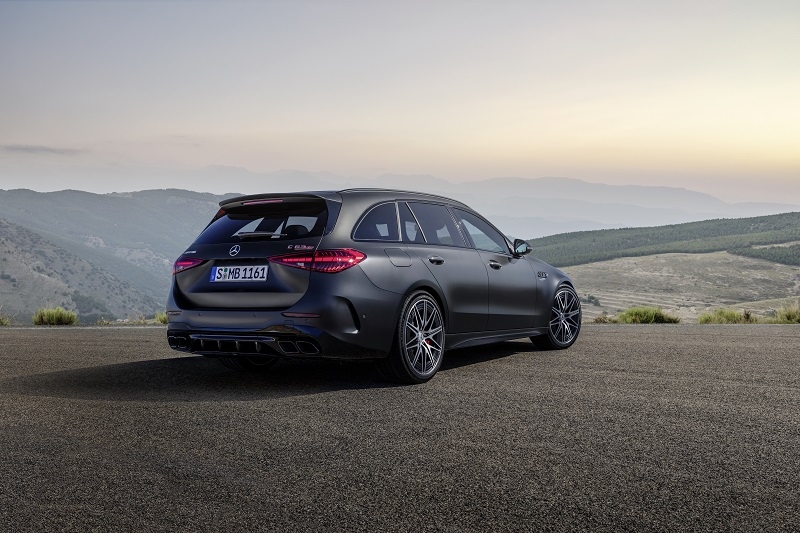
The engine is the M139 2.0-litre four-pot from the A45 S and CLA45 S, except installed longitudinally instead of transversely to power the rear wheels (via AMG’s 9-speed multi-clutch auto gearbox). The M139 was already the most powerful production four-cyl in the world, but in the C63 S it’s been whacked up to a faintly ridiculous 476hp and 545Nm (remember, the magnificent M156 6.2-litre V8 mustered only 457hp in the W204 C63). The electric motor meanwhile, puts out up to 204hp and 320Nm, and can power the front wheels via a propshaft to give the car proper all-weather ability.

The numbers tell only half the story though, because there are some seriously clever engineering solutions at play here all aimed at making up for the shortfall in cylinder count. For instance, all the hybrid gubbins are situated at the rear axle; the electric motor is hooked up to a 2-speed gearbox (like the Porsche Taycan), and they’re housed in a single unit together with the limited-slip differential. The compact 6.1kWh battery pack is located above this.
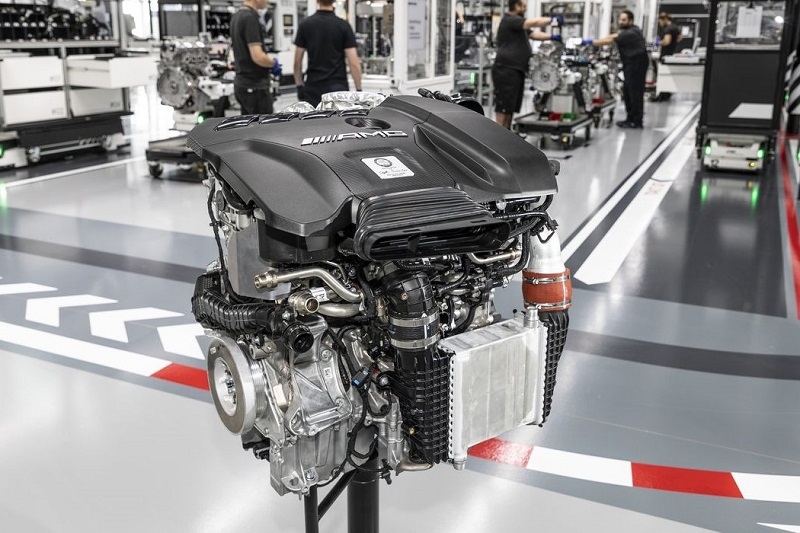
The numbers tell only half the story though, because there are some seriously clever engineering solutions at play here all aimed at making up for the shortfall in cylinder count. For instance, all the hybrid gubbins are situated at the rear axle; the electric motor is hooked up to a 2-speed gearbox (like the Porsche Taycan), and they’re housed in a single unit together with the limited-slip differential. The compact 6.1kWh battery pack is located above this.
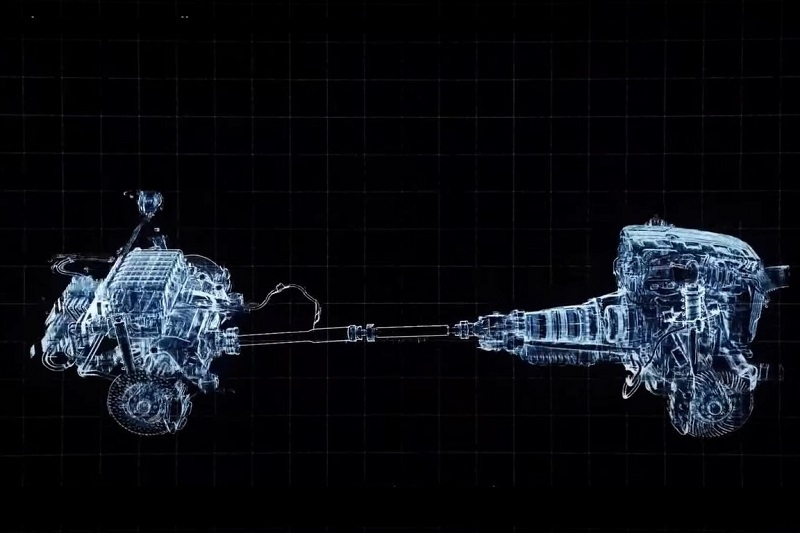
Aside from the packaging and weight distribution advantages, this layout also has an influence on dynamics: being connected directly to the rear axle means the electric motor can propel the car with even more immediacy and efficiency compared to the conventional method of mating the motor with the engine, gearbox or flywheel. Additionally, the motor’s resistance allows it to act as a form of traction control, “retarding” its and the engine’s output to the wheels to manage wheelspin, all without the stability control intervening. This allows the engine to run at a higher load during cornering for even quicker response at corner exit, and has the added bonus of charging the battery with the power that would otherwise have been wasted to the ESC braking the wheels.
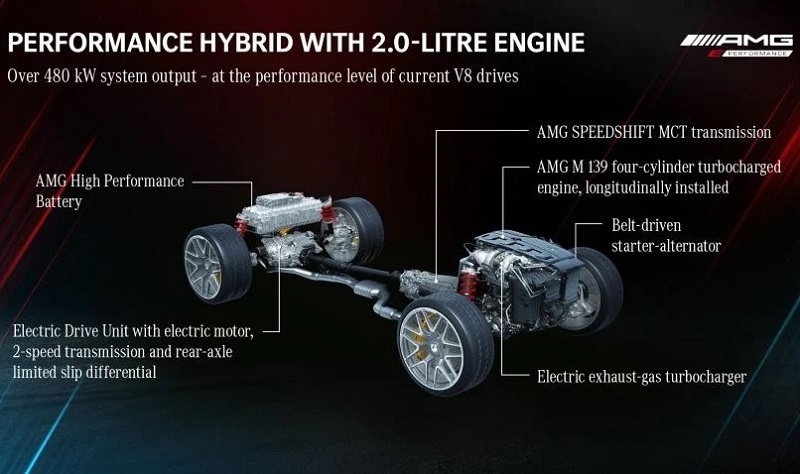
Aside from the packaging and weight distribution advantages, this layout also has an influence on dynamics: being connected directly to the rear axle means the electric motor can propel the car with even more immediacy and efficiency compared to the conventional method of mating the motor with the engine, gearbox or flywheel. Additionally, the motor’s resistance allows it to act as a form of traction control, “retarding” its and the engine’s output to the wheels to manage wheelspin, all without the stability control intervening. This allows the engine to run at a higher load during cornering for even quicker response at corner exit, and has the added bonus of charging the battery with the power that would otherwise have been wasted to the ESC braking the wheels.
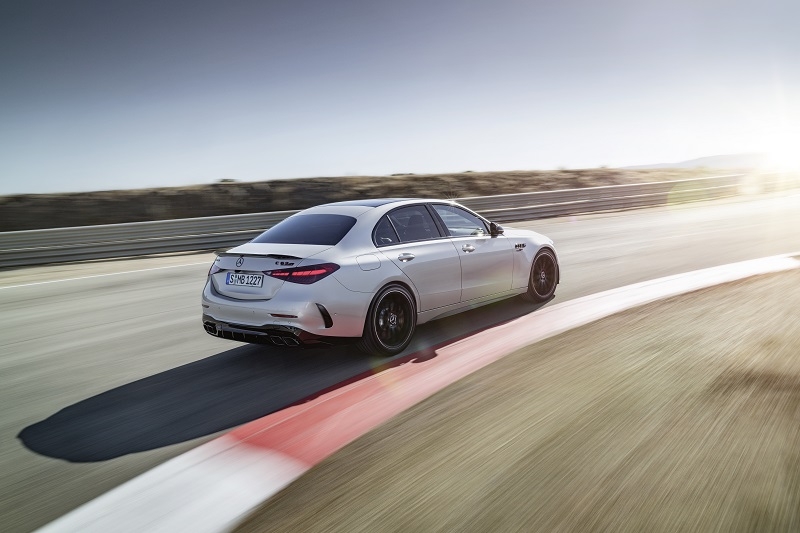
Then, there are the solutions derived from Mercedes-AMG’s Formula 1 effort. Like the V6 engines of F1’s turbo-hybrid era, the C63 S has an MGU-H system (Motor Generator Unit – Heat). This is a small electric motor attached to the turbocharger, which gets the turbine spinning even when there aren’t enough exhaust gases coming from the engine, thus eliminating turbo lag and also increasing torque at low revs.
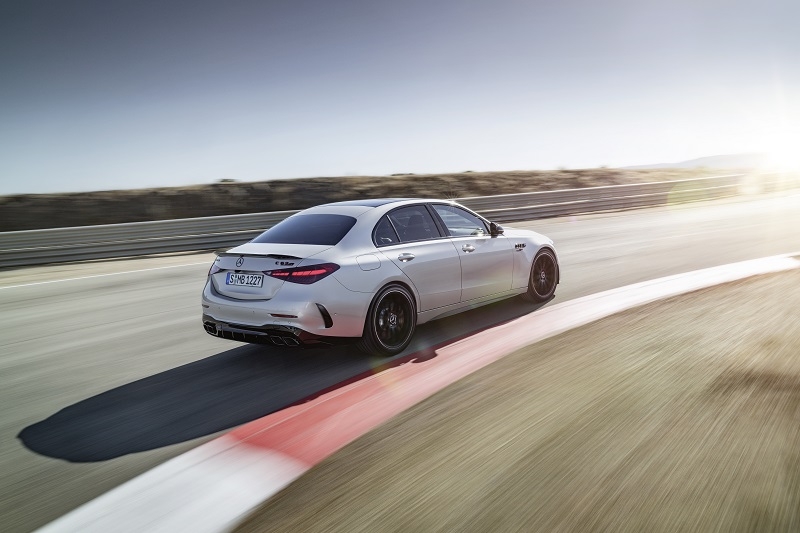
Then, there are the solutions derived from Mercedes-AMG’s Formula 1 effort. Like the V6 engines of F1’s turbo-hybrid era, the C63 S has an MGU-H system (Motor Generator Unit – Heat). This is a small electric motor attached to the turbocharger, which gets the turbine spinning even when there aren’t enough exhaust gases coming from the engine, thus eliminating turbo lag and also increasing torque at low revs.
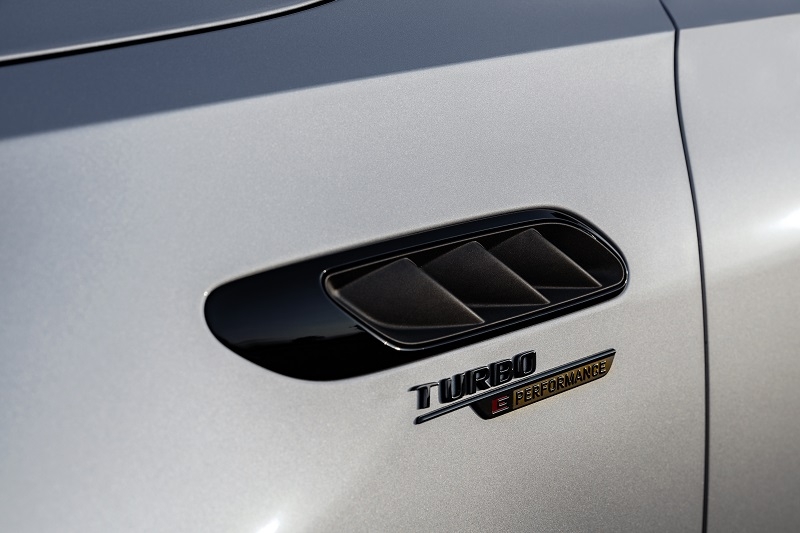
Meanwhile, the high-performance battery was developed with close cooperation from the F1 team’s powertrain division in Brixworth in the UK. Unlike the batteries in most cars, AMG’s solution is optimised for fast energy draw, high power density, endurance, and consistent performance rather than long range (it can only do 13km in EV mode). Key to this is effective thermal management; where conventional batteries only cool the entire pack as a whole, which quickly leads to heat soak and a degradation in performance, AMG developed a way to provide individual liquid cooling to each of the battery’s cells. This allows the battery to operate at a constant 45deg C and maintain optimal performance, even with the frequent discharging and charging that occurs during prolonged hot lapping.
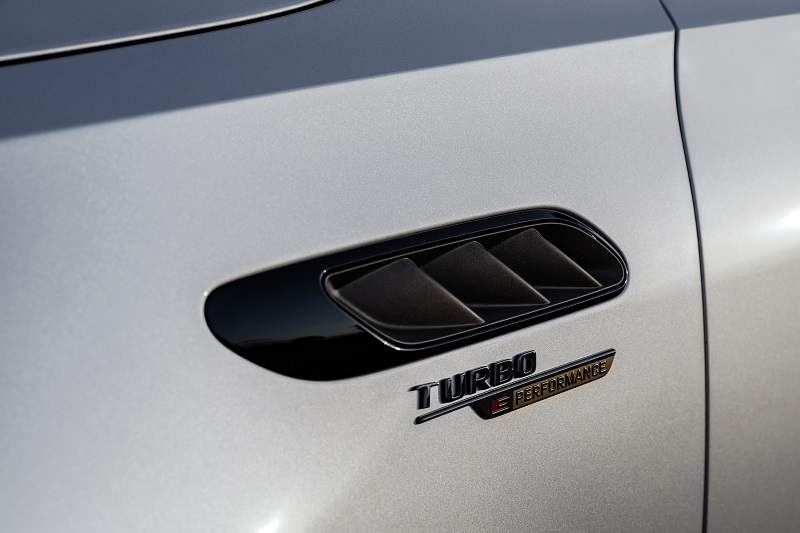
Meanwhile, the high-performance battery was developed with close cooperation from the F1 team’s powertrain division in Brixworth in the UK. Unlike the batteries in most cars, AMG’s solution is optimised for fast energy draw, high power density, endurance, and consistent performance rather than long range (it can only do 13km in EV mode). Key to this is effective thermal management; where conventional batteries only cool the entire pack as a whole, which quickly leads to heat soak and a degradation in performance, AMG developed a way to provide individual liquid cooling to each of the battery’s cells. This allows the battery to operate at a constant 45deg C and maintain optimal performance, even with the frequent discharging and charging that occurs during prolonged hot lapping.
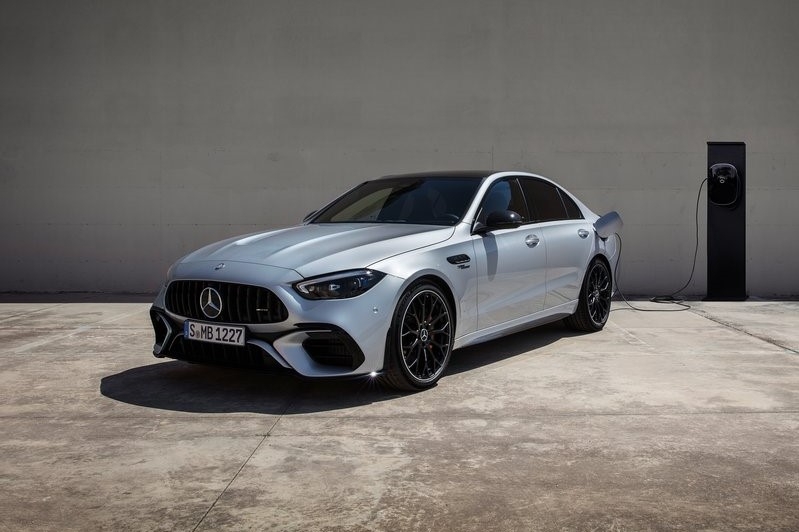
On the handling front, it’s got all the usual accouterments you’d expect to see in a luxury performance car: adaptive dampers, variable ratio steering, rear-axle steering (up to 2.5deg), and an AMG Dynamics system that controls the behaviour and intervention levels of the stability control - even a drift mode.
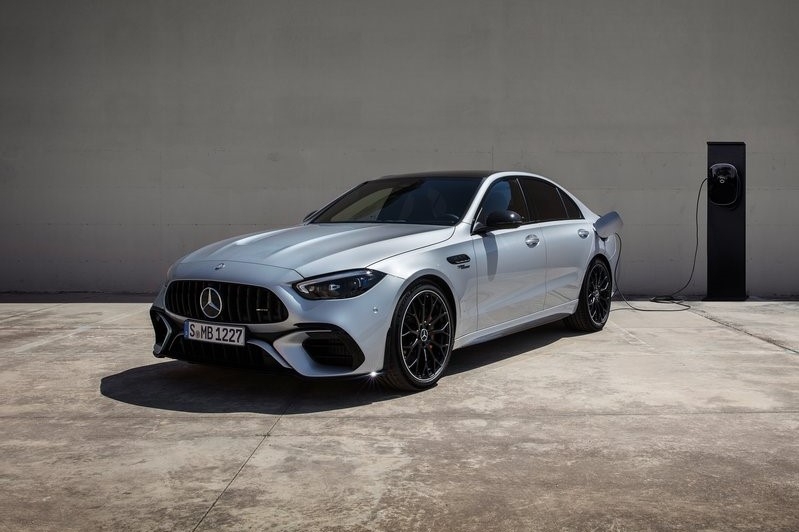
On the handling front, it’s got all the usual accouterments you’d expect to see in a luxury performance car: adaptive dampers, variable ratio steering, rear-axle steering (up to 2.5deg), and an AMG Dynamics system that controls the behaviour and intervention levels of the stability control - even a drift mode.
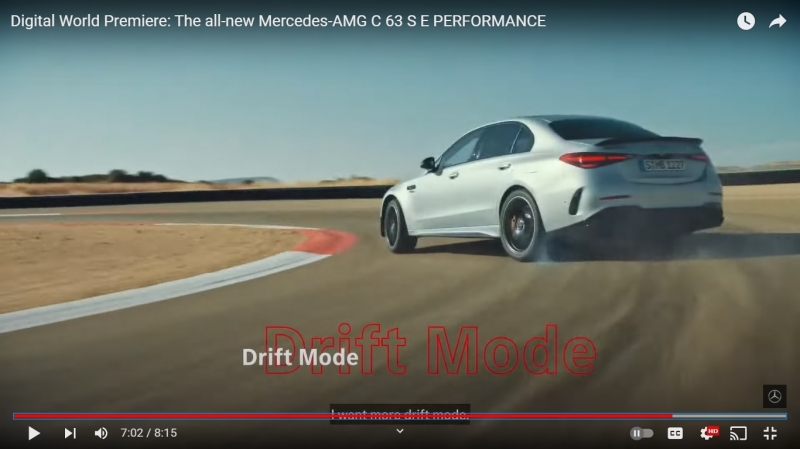
Impressive as that all is however, there are some important caveats to note. With all the added complexity of its drivetrain, the C63 S weighs over 2.1 tonnes, which is around 340kg heavier than the current V8 model. Will all that handling trickery be enough to effectively counter all that mass and still feel natural? We’ll see.
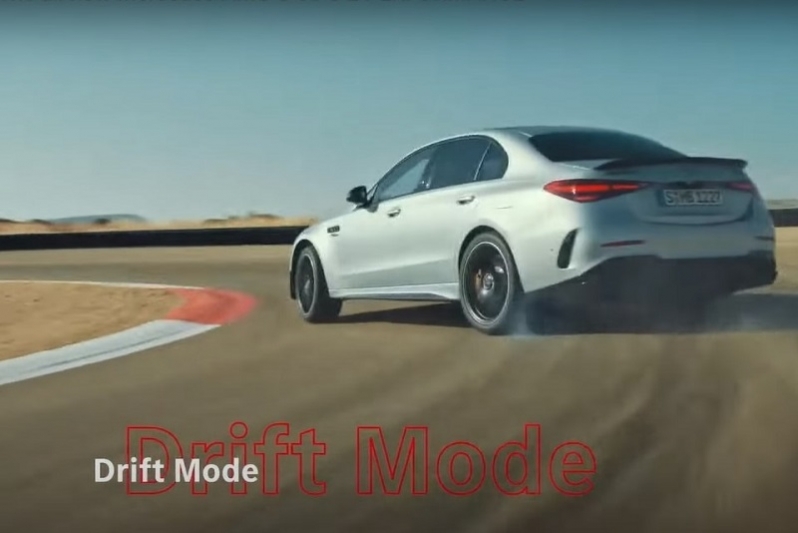
Impressive as that all is however, there are some important caveats to note. With all the added complexity of its drivetrain, the C63 S weighs over 2.1 tonnes, which is around 340kg heavier than the current V8 model. Will all that handling trickery be enough to effectively counter all that mass and still feel natural? We’ll see.
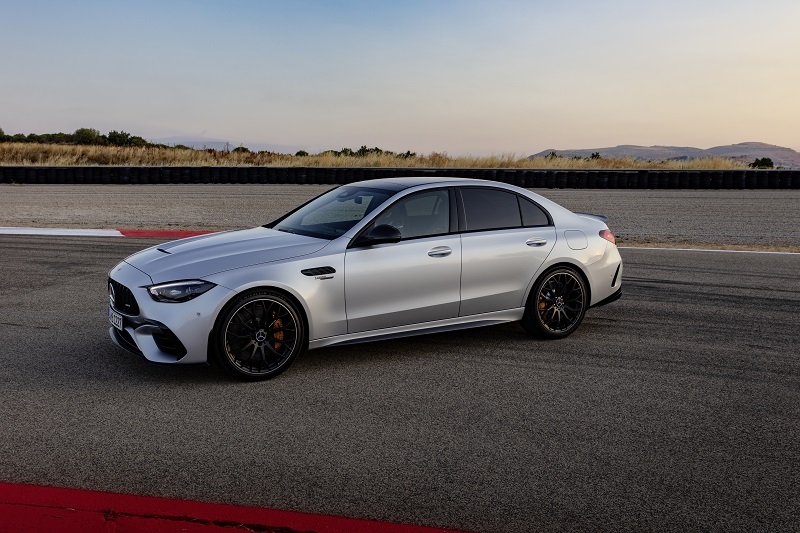
Next,it might not actually be that quick in the real world, especially on track: the electric motor can only give its full 204hp in a 10-second boost mode; otherwise its normal output is only 94hp, so most of the time it’s only producing 570hp in total. Which means that although it can boast an impressive power-weight ratio of 322hp/tonne, when out of boost mode that figure is only 270hp/tonne, less than the current G80 BMW M3’s 282hp/tonne, and quite far behind the outgoing V8 C63 S’s 291hp/tonne. Progress, eh?
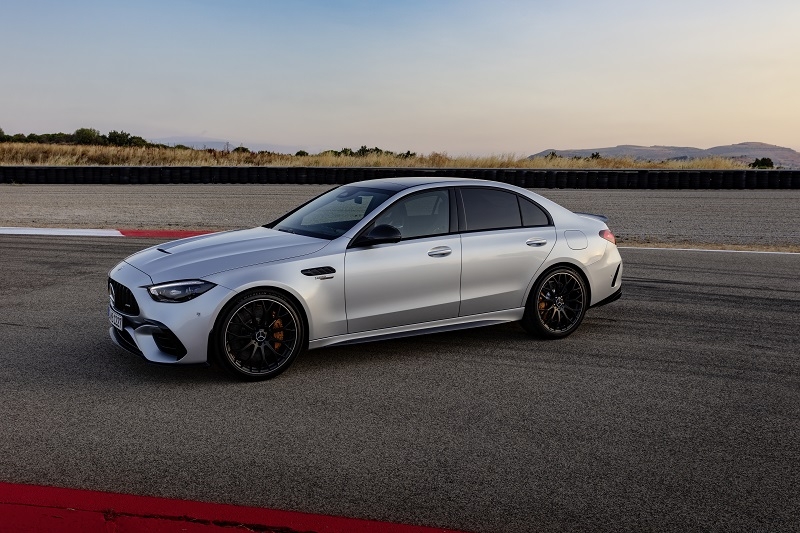
Next,it might not actually be that quick in the real world, especially on track: the electric motor can only give its full 204hp in a 10-second boost mode; otherwise its normal output is only 94hp, so most of the time it’s only producing 570hp in total. Which means that although it can boast an impressive power-weight ratio of 322hp/tonne, when out of boost mode that figure is only 270hp/tonne, less than the current G80 BMW M3’s 282hp/tonne, and quite far behind the outgoing V8 C63 S’s 291hp/tonne. Progress, eh?
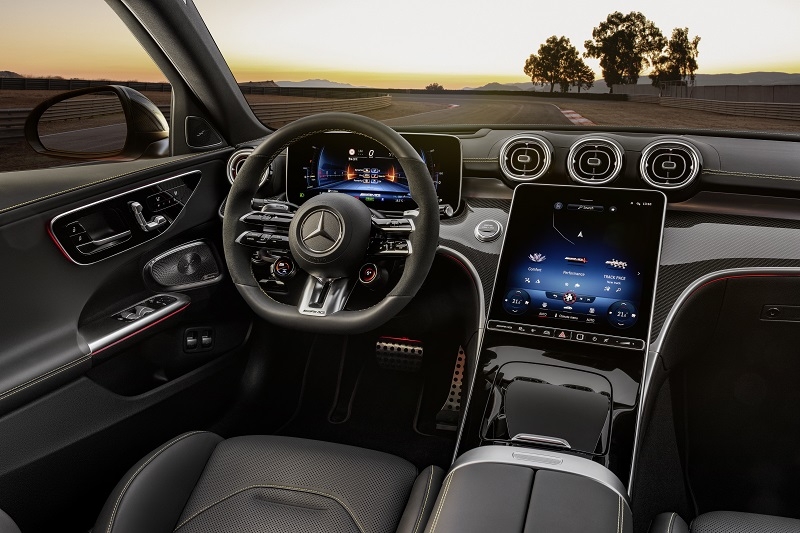
And finally, the elephant in the room: those four missing cylinders. Nobody’s ever going to complain about the new C63 S being slow, even if it’s gone a bit backwards in baseline stats, but as we’ve seen from Porsche’s 718 Boxster and Cayman, stepping down from eight or six cylinders to four takes a lot away from the driving experience. No doubt it’ll be efficient and effective, but how much emotion will be lost? A great engine noise is one of the qualities that elevates any car’s driving experience way beyond the sum of its parts, and with one of the biggest USPs of the old C63 over its Audi and BMW rivals being the drama and fury of its snorting V8, it’s now that bit harder for it to make its case beyond pure brand appeal.
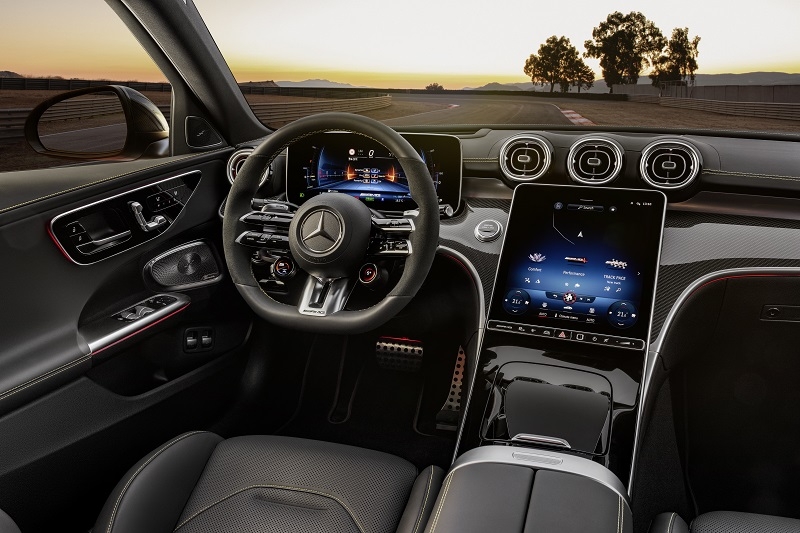
And finally, the elephant in the room: those four missing cylinders. Nobody’s ever going to complain about the new C63 S being slow, even if it’s gone a bit backwards in baseline stats, but as we’ve seen from Porsche’s 718 Boxster and Cayman, stepping down from eight or six cylinders to four takes a lot away from the driving experience. No doubt it’ll be efficient and effective, but how much emotion will be lost? A great engine noise is one of the qualities that elevates any car’s driving experience way beyond the sum of its parts, and with one of the biggest USPs of the old C63 over its Audi and BMW rivals being the drama and fury of its snorting V8, it’s now that bit harder for it to make its case beyond pure brand appeal.
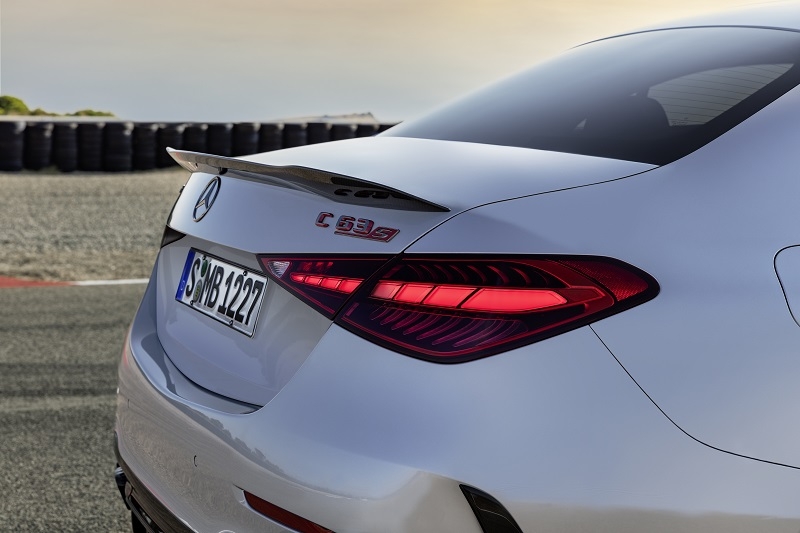
But anyway, though the downsized engine is a difficult concept for many petrolheads to embrace, there's enough clever and unique tech under the skin of the new C63 S E Performance to overcome the skeptic in me. This one is well worth watching out for.
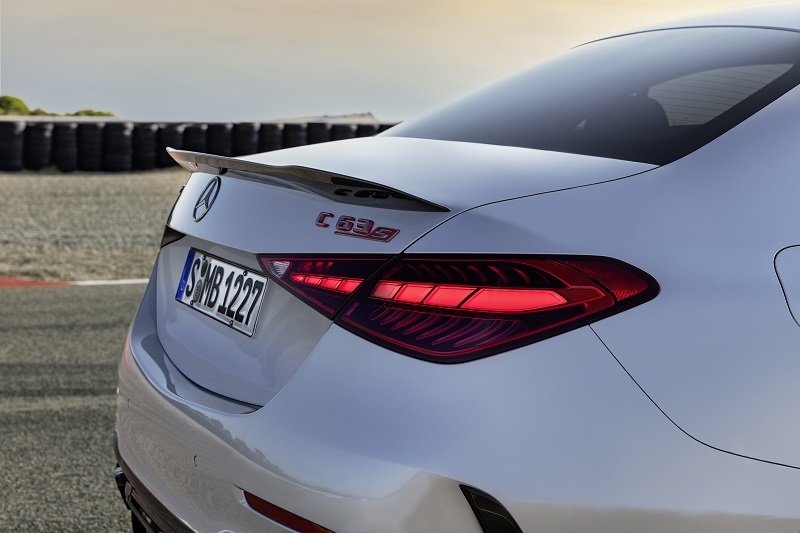
But anyway, though the downsized engine is a difficult concept for many petrolheads to embrace, there's enough clever and unique tech under the skin of the new C63 S E Performance to overcome the skeptic in me. This one is well worth watching out for.
